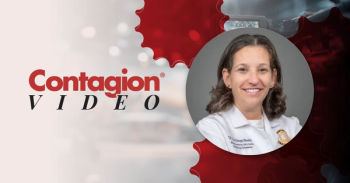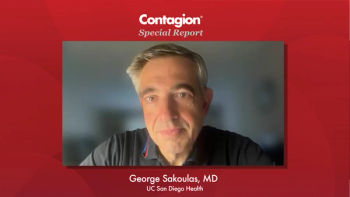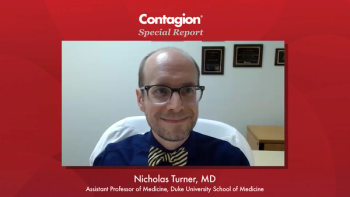
What is Antibiotic Stewardship (and What is it Not)?
Lauri A. Hicks, DO, captain, US Public Health Service, director, Office of Antibiotic Stewardship, medical director, Get Smart: Know When Antibiotics Work, Division of Healthcare Quality Promotion, Centers for Disease Control and Prevention, explains what antibiotic stewardship is and what ideal antibiotic stewardship programs in hospitals look like.
Lauri A. Hicks, DO, captain, US Public Health Service, director, Office of Antibiotic Stewardship, medical director, Get Smart: Know When Antibiotics Work, Division of Healthcare Quality Promotion, Centers for Disease Control and Prevention, explains what antibiotic stewardship is and what ideal antibiotic stewardship programs in hospitals look like.
Interview Transcript (slightly modified for readability)
“Antibiotic stewardship is really making sure that each patient gets the best treatment for their illness and that means, that when a patient needs an antibiotic, that they get it in a timely manner, they get the right drug, the right dose, and the right duration. It also means that if a patient doesn’t need an antibiotic, they don’t receive it unnecessarily.
What we are trying to do with antibiotic stewardship programs is make sure that each and every facility has an antibiotic stewardship program. That can either be a small team of individuals working together, [or] ideally it’s a multidisciplinary team from [areas] throughout the hospital representing different disciplines like nursing, pharmacy, physicians, infectious diseases, sometimes critical care as well. If all of those resources are available, ideally those people are coming together to develop policies to improve how antibiotics are being used.
One thing I want to mention, and this really kind of getting at your question about what antibiotic stewardship is not. Antibiotic stewardship is all about improving how we’re using antibiotics [and] optimizing antibiotic use. One perception is that it’s all about taking away antibiotics. We also want to make sure in certain circumstances when the patient is really sick and needs an antibiotic right away, that that patient gets that antibiotic as soon as possible and obviously that they are getting the right antibiotic treatment, especially a sepsis patient, a patient who is critically ill. So, the perception that it’s all about taking away [antibiotics] is not necessarily true; it’s not about just taking away an antibiotic. It’s about making sure that the patient is getting the best treatment for their illness.”
Newsletter
Stay ahead of emerging infectious disease threats with expert insights and breaking research. Subscribe now to get updates delivered straight to your inbox.


























































































































































































































































































